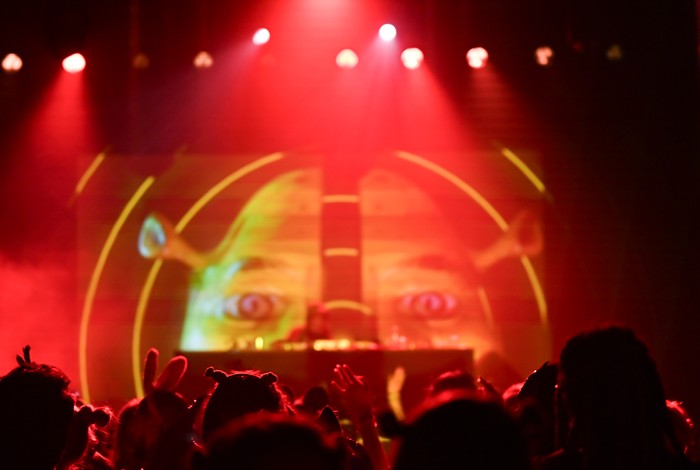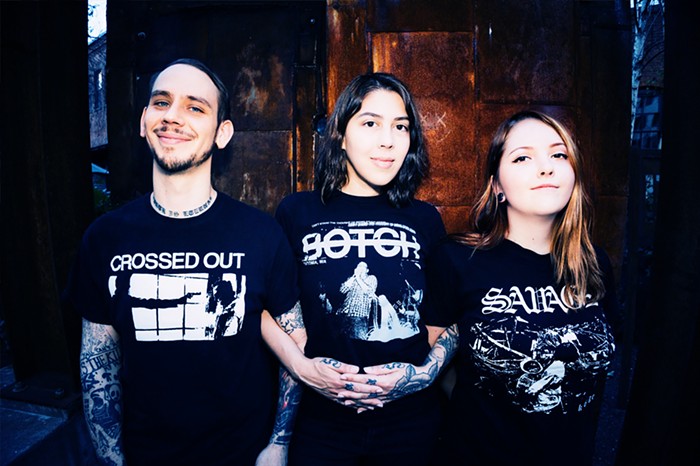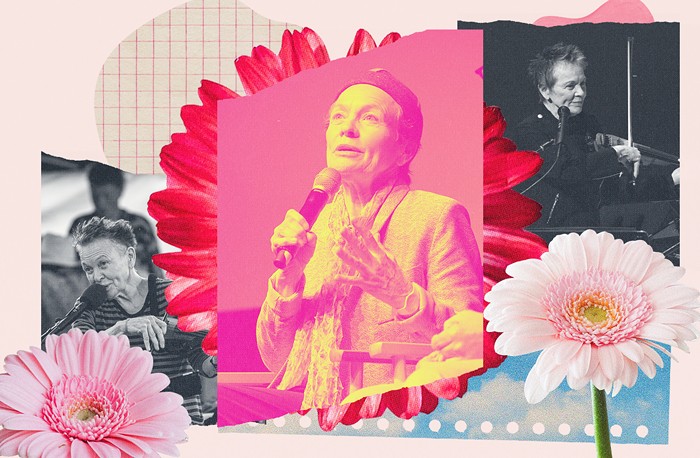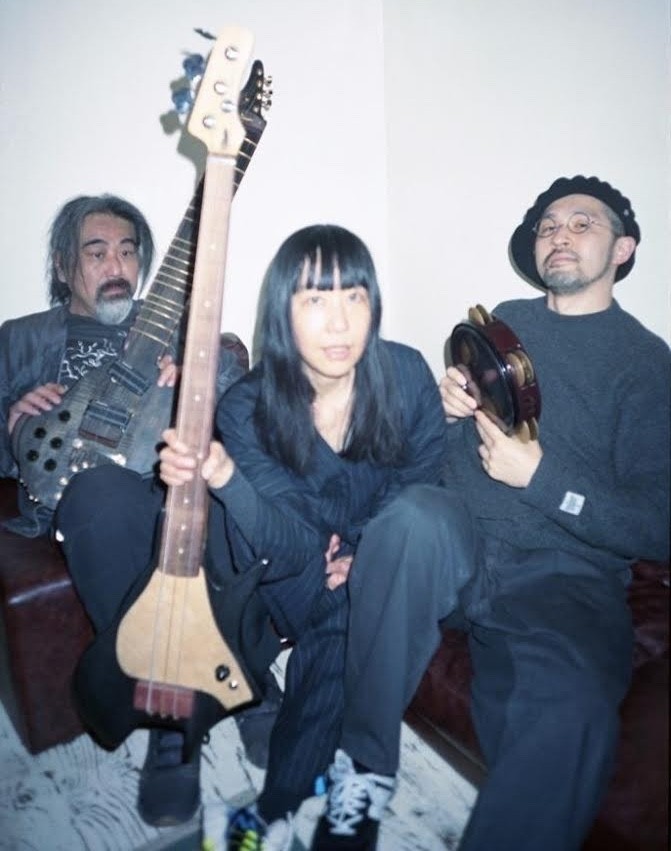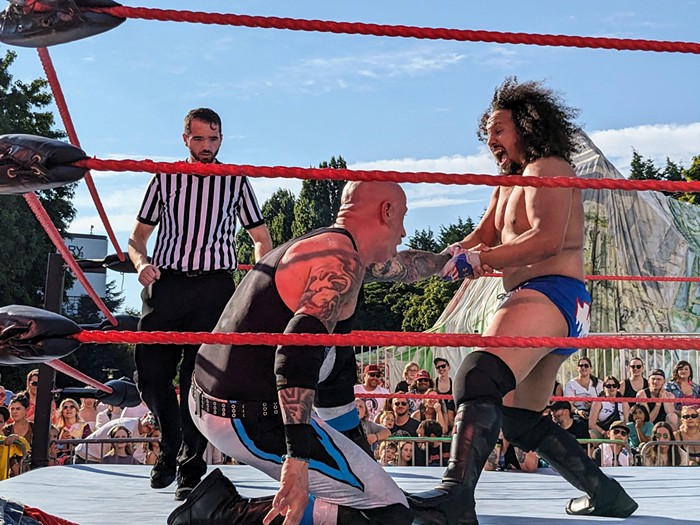A glow of love for the Raincoats radiates all over the Pacific Northwest—and it's so bright, it's likely visible from outer space. Kurt Cobain, Calvin Johnson, Tobi Vail, and Kathleen Hanna all championed the innovative all-female percussive post-punk combo long before they were invited to perform at MoMA and All Tomorrow's Parties. Still, they have never played Seattle before, and that's outrageous. Our region's fertile scene may not have spawned them—the late 1970s UK punk explosion gets credit for that—but were it not for the impact of grunge, indie rock, and riot grrrl, the Raincoats probably wouldn't be touring in 2012.
In the liner notes to Nirvana's 1992 rarities comp Incesticide, Cobain documents his quest to score the Raincoats' out-of-print debut LP during a London visit. That odyssey led him to guitarist Ana da Silva, who dutifully sent him a copy. The giddy fanboy swooned: "It made me happier than playing in front of thousands of people each night, rock-god idolization from fans, music-industry plankton kissing my ass, and the millions of dollars I made last year. It was one of the few really important things that I've been blessed with since becoming an untouchable boy genius."
"We were very delighted and charmed to know that Kurt Cobain seemed to like us the way he did," demurs bassist Gina Birch. "That was a very great thing." In 1993, the band's three original albums—The Raincoats (1979), Odyshape (1981), and Moving (1984)—were reissued by Geffen subsidiary DGC. The vinyl-only Fairytales comp soon followed on Portland's Tim/Kerr Records. An invitation to support Nirvana on a 1994 UK tour prompted the dormant band to reconvene. Although Cobain's death mooted those gigs, the Raincoats forged ahead. For their fourth album, 1996's Looking in the Shadows, they welcomed a new drummer; Heather Dunn, of K Records faves Tiger Trap, came recommended by Kim Gordon and Bikini Kill's Tobi Vail.
Vocal support from 1990s rebel girls helped the Raincoats get their groove back in a figurative sense, too. "We felt really inspired by listening to those bands and going out to see some of them," says da Silva. "That was when we started playing again." The Raincoats were a pioneering group with a DIY aesthetic, a defiantly democratic ensemble that rejected narrowly conscripted roles for women in rock. Now Bikini Kill were telling kids to seek out their back catalog.
Love for the Raincoats persists in our region today. "I remember buying a Raincoats CD when I was in high school," says Hannah Blilie of Gossip, who released a split single with the Raincoats in 2009. Their rough-hewn overhaul of the Kinks' "Lola" immediately impressed her. "The vocals were mind- blowing, the harmonies and the toughness of their delivery. I especially liked how the lyrics sounded being sung by women. It seemed to turn the gender-bending theme of that song into an even more exciting, dangerous, queer, and punk expression."
Dangerous indeed. "It was a bit like jumping off a cliff at the time," says Birch, apropos of the early years. Not only was the group self-taught, molding their aesthetic while still learning how to play, role models were nearly nonexistent. Nevertheless, the Slits and Patti Smith had lit a fire under them. "It was amazing that you felt like you needed permission to have a go at it. It was still terrifying and hard to do, but strangely, up until that point, it wasn't even something that we'd really considered. You might think, 'Why not?' But girls just didn't do that kind of thing."
Yet the Raincoats' forays into uncharted territory are precisely what made them so exciting. Vicky Aspinall's violin playing prompted some reviewers to draw parallels to the Velvet Underground, but ultimately the Raincoats sounded like no other. Their second album, Odyshape, remains one of the most vital—and least "rock"—records to come out of punk's heyday, featuring African percussion instruments including kalimba and balaphone. While former Slits member Palmolive had kept time on The Raincoats, Odyshape found Aspinall, Birch, and da Silva working without a fixed drummer. They expanded their sound by inviting peers such as Charles Hayward (This Heat) and Robert Wyatt (Soft Machine) to play along in the studio.
Recently, Birch interviewed Wyatt for a Raincoats documentary she's making. "He was talking about records he liked to listen to, records that were recorded live, old jazz records. He said the breath was on the record, life was on the record." Odyshape embodies that organic, spontaneous feeling, too. "It captured something in real time, not mediated by too much technology."
"Odyshape is a post-punk masterpiece," says Blilie. She applauds the Raincoats' atypical approach to rhythm and the incorporation of timbres from other cultures. "I was really into the off-kilter and almost tribal sound of their drumming and percussion. That was a huge influence on the work I did with my [previous] band Shoplifting."
By the time the Raincoats released Moving, Birch thought punk had run its course. "I'd believed in this idea of change and some kind of revolution so much, and then it just became New Romantics and pirates. It felt like it was over, and I wasn't sure why I'd gotten so worked up about it in the first place." A decade later, artists from our neck of the woods reminded her why. "When the riot grrrl thing happened, it felt like air had been breathed back into our lungs." ![]()

